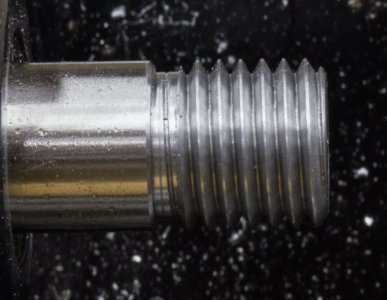- Joined
- May 13, 2019
- Messages
- 1,016
Though it's probably fine, try screwing one of your fabricated parts into a commercial part. Reason being, if there's a scaling problem in the software, it won't appear because a wrongly-threaded nut will always fit a matching wrongly-threaded screw.
You are correct. I did cut a M8 with the old software and tried it on a commercial nut with success. I didn't have a M20 bolt or nut, so I made both, but they could be off. I did check with a metric thread gage though.


